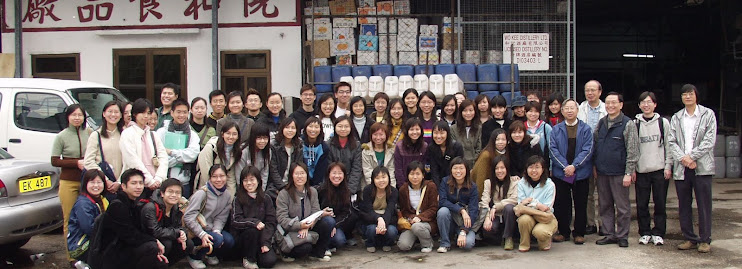http://www.efsa.europa.eu/en/efsawhat/riskcommunication.htm
Sent from my iPad
Resources for Microbiology. This blog provides resources for the course FNSC3180/4180 Food Microbiology of CUHK. Check this blog often to see what is new. Your comments are welcome. From May, 2011 onwards, news, analyses, and investigation of foodborne microbial diseases are regularly posted in this blog. Analyses of foodborne microbial genomes from Kwan Lab are also posted here.

FNSC4180 |
 Food Factory Field Trip Old Picture |
Total Pageviews
Pages
- Home
- Course Schedule 201819
- Poster special topics groupings 2018-19
- Calendar
- Posters 2016-17
- KwanLab Food Microbiology Glossary Beta Version
- Food Safety Information Database for Greater China--Published!!
- Greater China Food Safety Database 大中华食品安全信息库
- KwanLab
- Foodborne outbreak database
- Useful Food Safety Websites
Monday, April 29, 2013
Updates of Mind Maps
Thanks to the students who reminded me that I have not uploaded some of the lecture Mind Maps. I have checked and upload the missing ones. If you find that I still miss some, please let me know.
HS Kwan
HS Kwan
Review session questions
Question: why is the most heat-sensitive enzyme inactivated determining the growth and servival of the microorganism.
Answer: Refers only to essential enzymes. Inactivating the most hear-sensitive essential enzyme would stop the growth and may affect the servival of the cells.
Question: How does Prp changed into Prp-sc and cause mad cow disease?
Answer: Prp may change into Prp-sc by mutation. OR human acquired Prp-sc from food source. Prp-sc can recruit normal Prp and change its form to Prp-sc. Prp-sc aggregates to form rod-shaped polymers that can block the nutrient and energy supply of brain cells and cause mad-cow disease.
Review Session 20130429 Question from students and Answers 5
Question:
Not much is known about this bacteria
- Any more information on DAEC?
Not much is known about this bacteria
- Fungal toxin included in examination?
- Food preservation covered in examination?
Review Session 20130429 Question from students and Answers 4
Question:
Are all Clostridium spp unable to ferment sugar?
Consult: Microbe Wiki http://microbewiki.kenyon.edu/index.php/Clostridium_perfringens
C. perfringens has all the glycolytic genes and should be able to ferment sugar.
C. botulinum--no report on sugar fermentation
Are all Clostridium spp unable to ferment sugar?
Consult: Microbe Wiki http://microbewiki.kenyon.edu/index.php/Clostridium_perfringens
C. perfringens has all the glycolytic genes and should be able to ferment sugar.
C. botulinum--no report on sugar fermentation
Review Session 20130429 Question from students and Answers 3
Question: Shigella
Note the picture:

Not in exact sequence, e.g., shiga toxin can be produced any time
- Does it infect other primates?
- Pathogenicity picture explain more?
Note the picture:
- Endocytosis- Shigella gets into enterocyte
- Enclosed by vacuole
- Break out from vacuole
- Propagate in cell
- Cell secretes cytokines
- Cytokines attract PMN
- PMN opens up tight junctions between enterocytes
- Damage enterocyte layer
- Shiga toxin from Shigella gets into blood
- Damage blood vessels
- Blood diarrhea and systemic symptoms
Not in exact sequence, e.g., shiga toxin can be produced any time
Subscribe to:
Posts (Atom)

